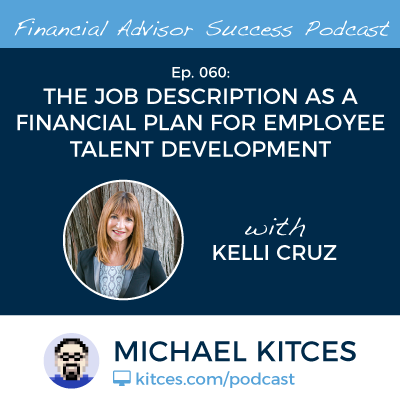With the now-more-than 80,000 financial planning professionals who have their CFP certification, one of the most common complaints I hear is from financial planners who receive a letter from the CFP Board stating that they need to update their website so that it doesn't simply state that they are a CFP, and instead, that they call themselves a "CFP certificant" or "CFP professional" instead. Which to many seems trivial, when the CFP Board could be spending their time (and enforcement resources!) going after "real" problems like CFP professionals who don't meet their fiduciary duty to clients, or just give bad financial planning advice in the first place. Additionally, it's not as if we see any State Boards of Accountancy sending letters to CPAs saying, “You should call yourself a CPA professional." But the reality is that there’s actually a really good reason why the CFP Board requires us to put that little trademark symbol after the CFP marks, and why they require us to say “CFP professional” or “CFP certificant” and not just “CFP” the way accountants can call themselves a CPA.
In this week’s #OfficeHours with @MichaelKitces, my Tuesday 1PM EST broadcast via Periscope, we examine why the fact that the CFP marks are a trademark and not a license means that the CFP Board must diligently defend the proper use of the CFP marks, including going after financial planners for the seemingly minor misuse of those marks by calling themselves a CFP!
As a starting point, it's important to understand that the reason we get to call ourselves CFP professionals or CFP certificants in the first place is that we sign an agreement with the CFP Board, where the CFP Board grants us the right to use their trademark. Because the CFP Board is the organization that actually owns the trademark on the CFP marks (along with the label “CERTIFIED FINANCIAL PLANNER”). Which means the CFP Board has the right to grant us a license to use their trademark... which they grant in exchange for meeting certain requirements, most significantly, that the financial planning professional meeting the "Four E's" of education, exam, experience, and ethics requirements, along with signing an agreement that we'll honor the CFP Board's Terms and Conditions, including those on the use of the marks. Which is distinct from how a license works (like a CPA), where an accountant's state actually grants a license to operate as a CPA.
The reason why this license-vs-trademark distinction matters is that since the CFP Board must rely on trademark law to control the CFP marks, they must abide by trademark law - which stipulates that trademarks should only be used as a descriptor of a noun, and not as a noun (which is why Nabsico calls their product "Oreo cookies", instead of "Oreos" and it's technically "Budweiser beer" and not just a "Budweiser"). And for the CFP Board to retain control of its trademark, and not be accused of abandoning it or allowing it to become generic (to the point that it can no longer be controlled as a trademark), they have to treat it like a proper trademark, which includes enforcing its proper use. Of course, organizations cannot do anything to stop consumers who start using trademarks as nouns, but since the CFP Board has a bona fide business relationship with us as CFP certificants, the CFP Board must take action to ensure the marks or used properly, or they risk losing the trademark altogether, which would allow anyone to use the CFP marks however they want.
This situation may not be perfect. Ideally, you’d actually need a license to become a CFP and a practicing financial planner, which would be a controlled title like CPA, and there would be a state or Federal regulator that ensures the only people who say they’re CFPs are actually CFPs, meet the requirements for CFPs, and are sanctioned and lose their license for failing to abide by the rules for CFPs. But that’s not the reality of financial planning today. We have licenses for selling insurance, selling investments, or managing a portfolio, but there's no license to be a financial planner or do financial planning. Instead, we voluntarily choose to obtain the CFP marks to distinguish our professionalism... by paying the CFP Board for the right to use their trademark (not by getting a CFP license!).
The bottom line, though, is just to recognize that the reason we can’t just call ourselves CFPs, and have to say we’re CFP professionals, is because the CFP is not a license. It’s a trademark. Owned by the CFP Board, which grants us the right to use the marks as long as we meet their standards. Which means, if you really value the CFP marks, and want to see them remain distinct, you want the CFP Board to be taking the necessary steps to protect them. Even if it’s a bit annoying when it comes at you directly!

 Welcome, everyone! Welcome to the 61st episode of the Financial Advisor Success Podcast!
Welcome, everyone! Welcome to the 61st episode of the Financial Advisor Success Podcast! Welcome, everyone! Welcome to the 60th episode of the Financial Advisor Success Podcast!
Welcome, everyone! Welcome to the 60th episode of the Financial Advisor Success Podcast!
